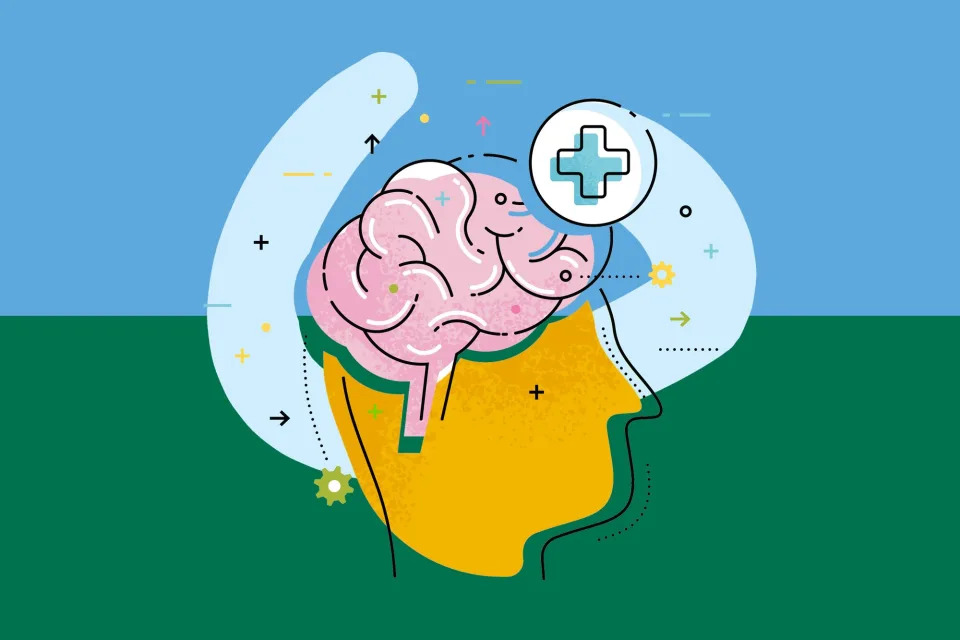Eating Well
A New Study Hints That 38% of Cognitive Decline Is Impacted By These Lifestyle Factors
Karla Walsh – February 14, 2023

Getty Images
If you can still sing along to every boy band song of the early 2000s and can recite your childhood best friend’s phone number, you might be thinking you’ll never have to worry about memory challenges.
While it’s true that a minority of Americans are officially diagnosed with dementia or Alzheimer’s disease, it’s probably far more common than you might expect. According to an October 2022 study published in JAMA Neurology, 1 in 10 American seniors is currently living with dementia, and another 22% of those 65 and older experience mild cognitive impairment; one of the early signals that more serious cognitive challenges may be on the horizon. That’s about one-third of all individuals 65 and older.
Cognitive decline naturally occurs as we get older; it’s natural that our ability to remember details, understand, learn and think degrade slightly over time. But when it starts to impact the quality of daily life and the ability to lead a happy, healthy, secure life, that’s when a brain-related diagnosis might occur.
Family history certainly plays a role in the risk for dementia and other cognition-related conditions, and scientists have discovered a variety of habits can also move the needle. Things that have been previously shown to reduce the risk for cognitive complications later in life include:
- Eating more fruits and vegetables
- Keeping a stable blood sugar
- Limiting intake of ultra-processed foods
- Maintaining a healthy blood pressure
- Not smoking
- Scoring enough sleep
- Staying socially engaged
- Incorporating regular physical activity
But there still appears to be a gap in the understanding of all of the possible risk factors for cognitive decline, so researchers at Ohio State University and the University of Michigan decided to focus their recent efforts to help clear up the cognitive confusion…and potentially prevent cases of cognitive decline in the future.
According to a study published February 8 in the journal PLoS ONE, a handful of less-commonly-cited factors account for about 38% of the cognitive function variation at age 54: personal education level, parental education, household income and wealth, race, occupation and depression status.
What This Brain Health Study Found
For this study, lead author Hui Zheng, Ph.D., professor in the Department of Sociology at Ohio State University and his team crunched the numbers from more than 7,000 American adults born between 1931 and 1941 who had enrolled in the Health and Retirement Study. This cognition-related study includes participants’ health biometrics from 1996 to 2016, and also has details about lifestyle, such as exercise, smoking status, medical diagnoses and socioeconomic factors.
Dr. Zheng and his team used a statistical approach to try to estimate the role (if any) and the percentage each of their studied factors might impact neuropathology (aka diseases of the brian, such as cognitive decline). They found that early life conditions and adult diseases and behaviors played a fairly small role—about 5.6%. But teaming up to contribute a whopping 38% in risk level was a combo platter of socioeconomic status (including education level of both the person and their parents, income/wealth and occupation), race and mental health.
Prior to this study, doctors and scientists had mainly suggested that an individual’s choices and actions matter most in maintaining cognitive functioning. This study suggests that it’s time to turn some attention to social determinants of health, too.
Related: 7 Sneaky Signs You Could Have Cognitive Decline, According to Experts
The Bottom Line
This new brain health study found that education level, income, race and depression status, in tandem with healthy lifestyle habits, play a surprisingly large role in the potential development of dementia or Alzheimer’s disease.
You can’t isolate one habit or factor and deem it the cause of cognitive decline. Brain health is impacted substantially by personal well-being throughout the lifespan. This includes how secure one feels at home, whether or not they’re experiencing a mental health challenge like depression, thier level of financial freedom and how much they’ve been able to study to build up their “brain bank.”
All of this points to the importance of viewing brain health through the individual and the systemic lens. A community must be designed in a way to support economic and educational access, mental health resources, has safe places for physical activity, access to a wide variety of foods and the opportunity for social connection. Admittedly, this is a lofty and substantial prospect, and is much easier said than done. But with nearly one-third of all Americans over 65 affected by cognitive impairment, it certainly can’t hurt to start exploring ways to improve our current landscape.
